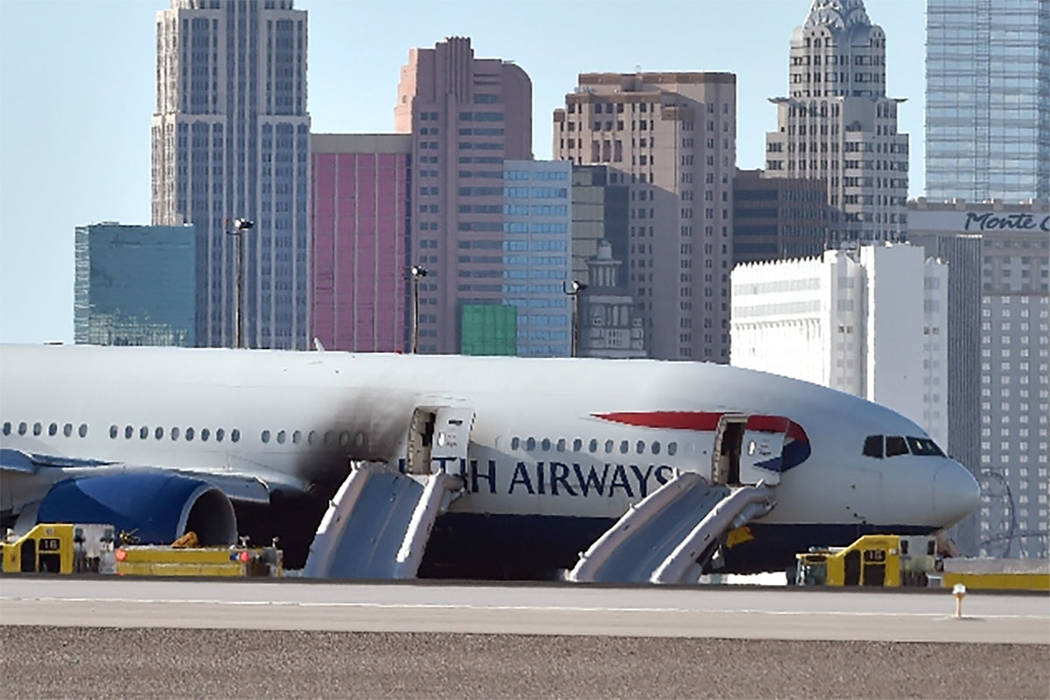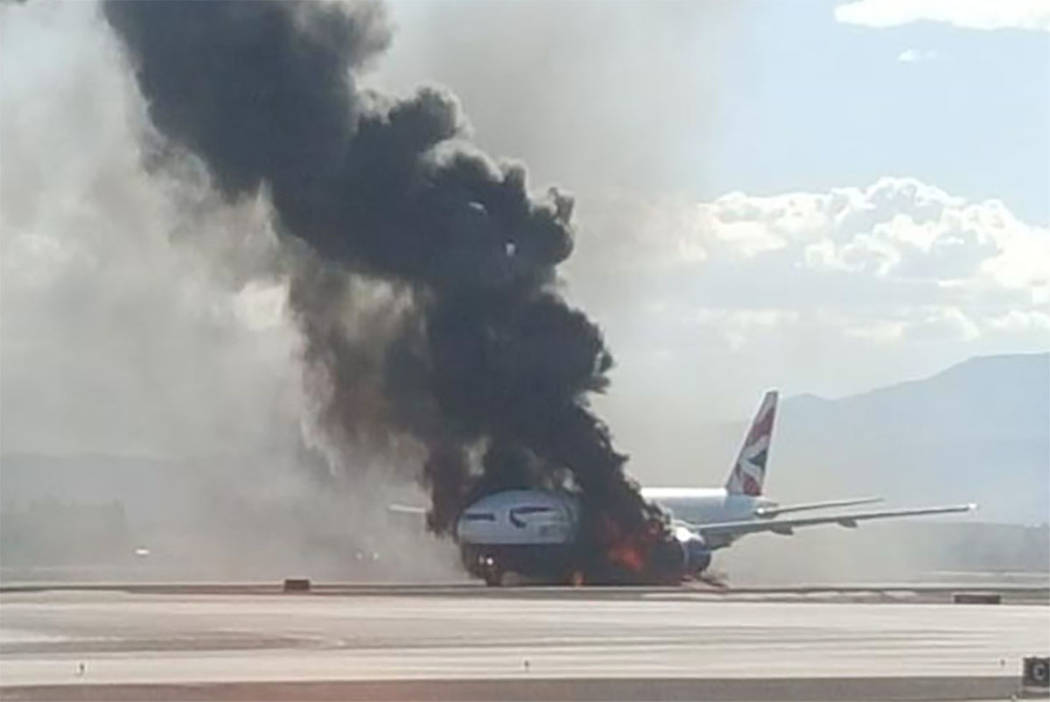Engine crack caused British Airways fire in Las Vegas, feds say


A fatigue crack in a jet engine compressor caused a British Airways plane to catch fire following an aborted takeoff from McCarran International Airport nearly three years ago, the National Transportation Safety Board said Wednesday.
The NTSB also blamed the captain for failing to follow an engine switch-off procedure that delayed the evacuation of all 159 passengers and 13 crew members from the Boeing 777 aircraft bound for London’s Gatwick Airport on Sept. 8, 2015.
Thirteen people were hospitalized following the incident.
NTSB inspectors could not determine what caused the engine compressor to crack, but they stated in a report that “contributing to this accident was the lack of inspection procedures.” Since the incident, the engine’s manufacturer, General Electric Co., has established procedures to detect cracks.
“We fully supported the NTSB investigation which did not identify any safety recommendations for British Airways,” executives with the United Kingdom’s largest air carrier said in a statement.
“The safety of our customers and crew is always our very first priority,” British Airways officials said. “Our crew responded quickly and decisively bringing the aircraft to a swift halt, assessing the situation and safely evacuating the aircraft.”
British Airways Flight 2276 was preparing for takeoff from Las Vegas when the crew reported an engine fire at 4:13 p.m., airport officials said at the time. The Clark County Fire Department responded within a minute and extinguished the fire by 4:18 p.m.
The NTSB report detailed key events leading up to the fire, which burned a large hole in the cargo hold and damaged the left engine.
The cockpit’s voice recorder captured a “bang” sound during the Boeing 777’s takeoff roll from McCarran, NTSB investigators said. The jetliner was traveling about 88 mph and veered left as the captain aborted takeoff.
A fire warning bell sounded as the plane slowed down, NTSB officials said. When it stopped, the captain called for an engine fire checklist that instructed him to cut off the fuel control switch for the affected engine.
Flight data recorder information showed that 28 seconds had passed from the start of the engine failure to the time the fuel valve was closed, resulting in 97 gallons of fuel spilling onto the runway.
“If the left engine had been shut down sooner, there would have been less fuel on the runway to feed the fire,” NTSB investigators wrote in the report.
The captain also failed to follow protocol by waiting 43 seconds to shut down the plane’s right engine — which was not on fire — after issuing a command to evacuate the plane, NTSB officials said. The engine should have been switched off prior to the evacuation order.
The NTSB found that jet blasts from the right engine had caused an “unusual attitude” for two evacuation slides on that side of the plane. Still, all the passengers and crew members were able to evacuate before smoke and fire reached the plane’s body.
Although it was not a factor in the evacuation, the NTSB also raised concerns about passengers who evacuated the plane with carry-on baggage, which could have slowed the process.
Contact Art Marroquin at amarroquin@reviewjournal.com or 702-383-0336. Follow @AMarroquin_LV on Twitter.
Related
Passengers frustrated with British Airways response to Las Vegas fire
British Airways jet that caught fire before takeoff at McCarran to fly again













